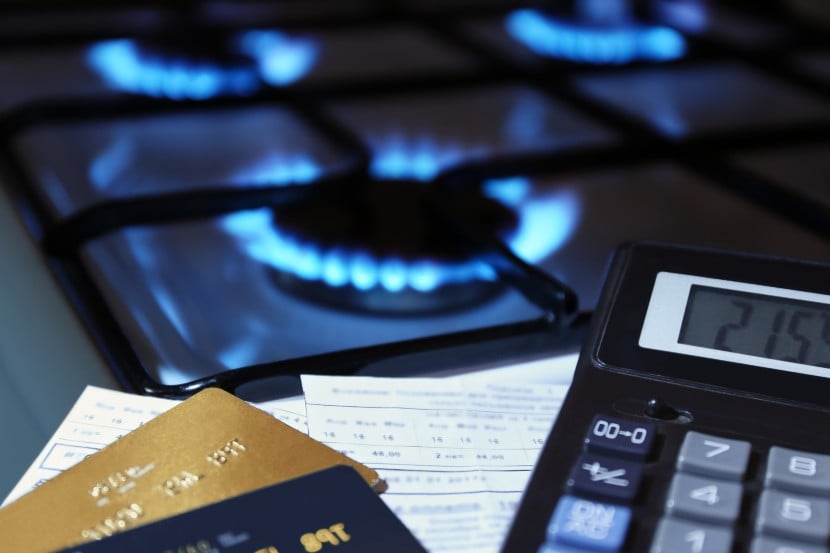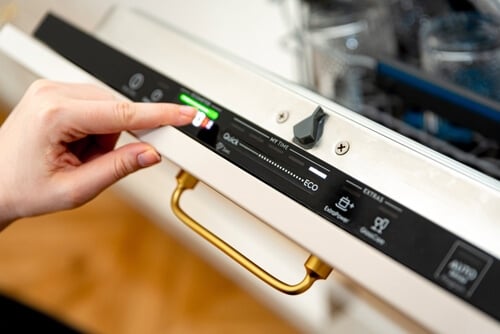Rather than have separate gas and electricity energy bills to contend with, a dual fuel tariff groups both energy supplies in a single contract. This is a far more convenient way to manage your outgoings and your energy consumption, as you get one invoice per payment period. It could also save you money.
In this guide we explain how you go about comparing dual fuel energy tariffs, and why it’s worth considering.

Switching energy providers
If you're looking for certainty on your energy bills, compare energy deals to see fixed deals that are currently available.
What is a dual fuel tariff?
If your energy comes from the same supplier and you get one bill covering both gas and electricity, you have a dual fuel tariff.
Most energy providers offer dual fuel tariffs, as they’re easier and often cheaper to run. They’re attractive to customers, as you only have to deal with one company and get one bill, which helps with money management.
Are dual fuel tariffs cheaper?
There’s no guarantee that a dual energy deal is cheaper than separate gas and electricity tariffs. But suppliers tend to pass on some of the savings they make by rolling both energy supplies together in one contract.
Energy companies do this to attract new customers, so it’s worth comparing dual fuel deals if you’re on a variable rate contract. Likewise, start looking if your fixed-term contract is drawing to a close.
What are the advantages of a dual fuel tariff?
There are several benefits to opting for a dual fuel tariff. Here’s a rundown of the main benefits:
-
Cost: It’s often cheaper to get your gas and electricity together in one tariff. This is because the supplier benefits from a second revenue stream that’s linked, and so cuts down on admin. To generate business, suppliers tend to pass on some of their savings in the form of lower costs and discounts to lure customers away from the competition.
-
Management: With half the number of energy bills to keep on top of, it’s easier to keep abreast of what you’re spending on gas and electricity.
-
Comparisons: With one bill covering both gas and electricity use, it’s simple to compare your current tariff with others. Also, it does away with the hassle of having to take into account 2 sets of tariff fees when working out whether you’re getting the best overall deal.
-
Environmental benefit: By grouping gas and electricity together you get half the number of energy-related mail than you’d overwise get. You can also opt out of post altogether by opting for an online tariff.
What are the disadvantages of a dual fuel tariff?
There are a couple things you should bear in mind before leaping into a dual fuel tariff:
-
The bottom line: There are several dual fuel tariffs available at any time, but this doesn’t guarantee you’ll always find one that is cheaper than single fuel contracts. Remember to compare all types of tariff.
-
Watch out for fees: Just as with single fuel tariffs you need to pay an exit fee for both types of energy if you wanted to get out of a fixed term tariff early. Other fees can also bump up the cost.
How do dual fuel tariffs work?
A dual fuel tariff covers both your gas and electricity use, and sees you billed for both with one monthly or quarterly invoice.
There are 3 main types of dual fuel tariffs, which should be familiar to anyone who's paid separate gas and electricity bills.
-
Fixed rate tariffs: You're locked into a plan for a set period with a fixed rate tariff, usually 12 months. You pay a fixed amount per unit of energy - kilowatts per hour (kWh).
-
Variable rate tariffs: The rate you pay changes depending on the wholesale, or industry, price of energy. This means they can be cheaper than a fixed rate package if energy prices are low. The problem is the rate can fast overtake those offered on a fixed rate deal if energy prices keep rising.
-
Online tariffs: These are available in variable and fixed rate varieties. The key difference is they tend to be cheaper to run, with no post to send and receive as all transactions and correspondence is done online. They can also be more accurate as they allow for up-to-date meter readings to be processed.
Go green energy tariffs?
With climate change still a key issue for the planet to wrestle with, it should come as no surprise that dual fuel suppliers offer tariffs using energy that comes from renewable sources. Green tariffs, as they’re known, also offset any gas and electricity that would leave a carbon footprint. They do this by contributing to green projects, such as afforestation programmes.
How do I find out if I have a dual fuel tariff?
If you’ve been with your current supplier for ages, paying by direct debit or by prepayment, you might not know whether you have a dual fuel tariff. This scenario isn’t as uncommon as you might think. Certain suppliers have the lion’s share of coverage in specific regions, so you could have separate gas and electricity tariffs with the same company. In this case, you have 2 single energy tariffs, even though a dual fuel tariff, perhaps with your current supplier, might be cheaper.
If there’s a question mark over who provides your gas and electricity dig out your most recent energy bills. If you have a separate one for each, you don’t have a dual fuel tariff and should look into whether there any cheaper tariffs are available.
If you can’t find your energy bills or log into your online energy account, give your supplier a call. It's worth asking whether you could save money by switching to a dual fuel tariff.
Do all energy suppliers offer dual fuel tariffs?
Pretty much all energy suppliers offer dual fuel tariffs because they're cheaper and easier to manage for both themselves and their customers. As such there’s no shortage of firms and dual duel tariffs to compare.
How do I compare gas and electricity dual fuel prices?
All you need to do is enter a few details. Within minutes you should see a list of tariffs that are be available to you. Don’t rush, though. The more accurate you answer the questions, the more accurate the results should be.
Armed with a list of tariffs on the results page, you can select the deal that’s right for you, be it a fixed or variable rate tariff. Remember that even at this stage you can make savings by setting up a direct debit to ensure regular payments are made.
Using our energy comparison page is quick and easy, and it’s secure. Once you’ve filled in your details, selected a tariff and entered your payment details we do the rest.
Is it easy to switch to a dual fuel tariff?
Switching to a dual fuel tariff is straightforward. The process is exactly that same as it is for moving to a new standalone gas or electricity contract. In fact, it’s easier as you only need to go through the process once.
In practice all you do is enter your details on the comparison page, get a list of quotes on the results page and select the one you like. When you’re done, we’ll send your change of supplier request to your old energy company or companies, as well as contacting your new provider to confirm your interest.
All you need to do is let your previous supplier know your meter reading on a specific date so they can give you an accurate final bill.
Be prepared to switch
Energy prices fluctuate. But however high or low they are, it’s worth regularly reviewing the market to see if there are any good deals to take advantage of.
How long does a dual fuel switch take?
The whole process of switching to a new dual fuel tariff should be completed with 5 days. You then get a 14-day cooling-off period, during which you can change your mind and opt out of the contract. Of course, you still need to pay for any energy you use during that period.
There’s no paperwork to complete and send off, except for giving your old supplier an up-to-date meter reading, so they can bill you.
Likewise, there’s no downtime between your old contract ending and the new one beginning. Also, there’s no need for a supplier to visit you, unless you’ve agreed to have a smart meter installed.







